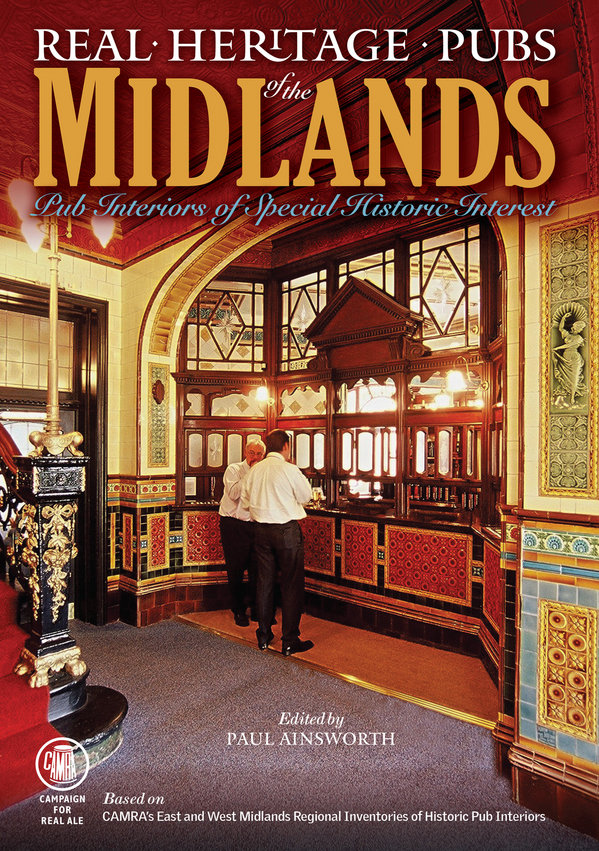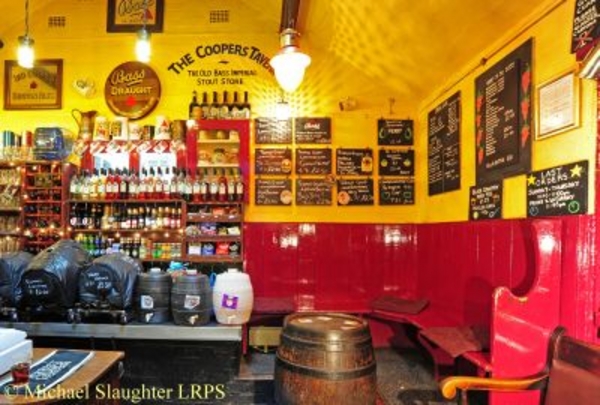Raise a glass to Midlands pubs heritage
Added: Sunday, April 26th 2015

Real Heritage Pubs of the Midlands. Edited by Paul Ainsworth. CAMRA Books £5.99
Two years ago I went for the first time to the Bartons Arms in the Aston district of Birmingham and spent the breaks during a meeting to wander the rooms and floors of this astonishing building. Nobody builds pubs like this anymore because nobody could afford to do so. The pub – emporium does it better justice – is a shrine to Victorian and Edwardian pomp and splendour.
The country was rich and powerful, the centre of a mighty empire, and brewers such as Mitchells & Butlers were equally puffed up with pride -- and cash.
M&B was a large brewery at the heart of what is often called “Britain’s second city”. But Birmingham was more than that: it was the heart beat of the British economy. It stood, cheek by jowl, with the Black Country, so called because factories, mills and mines pumped soot and dirt into the air as they fed the voracious demand for steel and coal. Birmingham and its environs were the engine room of 19th and early 20th century Britain.
And there were parched throats to refresh. Under pressure from magistrates and a powerful temperance movement, brewers built “improved” public houses where drinkers were encouraged to sit rather than jostle, sup in moderation, and even welcome women. They were pubs that reflected Britain’s grotesquely stratified society, with rooms and bars set aside for toffs, the “respectable” working class and what Marx and Engels – no strangers to pubs themselves – called the lumpen proletariat.
As a sign of those times, the Barton Arms still retains its “snob screens”, revolving glass panels above the serving counter that allowed the denizens of the saloon to avoid being seen by the hoi-polloi in the public bar.
Flush with money, the brewers of the day employed the finest architects to design grandiose pubs with all the frills and flourishes of Art Nouveau: ceramics, sweeping staircases, stained glass windows, dados, turrets and tiles. As the age of empire declined and finally disappeared, pubs became more penny plain. After World War Two, there was no money at all and new pubs tended to be rudimentary in the extreme.

Add in to the mix the survival of unpretentious ale houses, such as the Coopers Tavern in Burton-on-Trent, once the Bass bottle store, now a haven for beer lovers with its simple layout, workaday benches, and beer – including the divine Draught Bass – straight from the cask.
This splendid book could be a memento mori to the past glories of the pubs of this sprawling region. But thanks to the dedicated work of CAMRA’s Pubs Heritage Group, many of them survive. In the case of the Bartons Arms, the survival is remarkable as it stands in an area of post-industrial urban dereliction.
The members of the Heritage Group are the unsung heroes of the campaign. For years they have won listings for threatened pubs, and photographed and described them in minute detail. The group has worked closely with English Heritage to save the pubs not as museum pieces but as living, breathing places for future generations to enjoy.
The book – full colour and wonderful photos, amazing value at £5.99 – stretches from Herefordshire and Shropshire to Lincolnshire and takes in Derbyshire, Leicestershire, Nottinghamshire, Northants, Staffs, West Midlands, Worcestershire and Warwickshire. In all it’s a cornucopia of stunning boozers, including – as a lover of Art Deco and cricket – the superb Test Match near Trent Bridge. As well as fine designs, there are memorable pub names as well: Swan in the Rushes, Generous Briton, Roaring Meg – a type of canon used during the Civil War – Mug House and Monkey House.
There’s an outline of the work of the Heritage Group and a guide on how to get pubs listed to avoid the developers’ wrecking ball. And the book is sprinkled with short essays by the redoubtable Geoff Brandwood on such arcane matters as Table Service, Women in Pubs, Jug & Bottle service, and a brief history of ceramics.
Put simply, this is a wonderful book. Buy it, read it, then cherish its work by going on the best pub crawl of your life.








